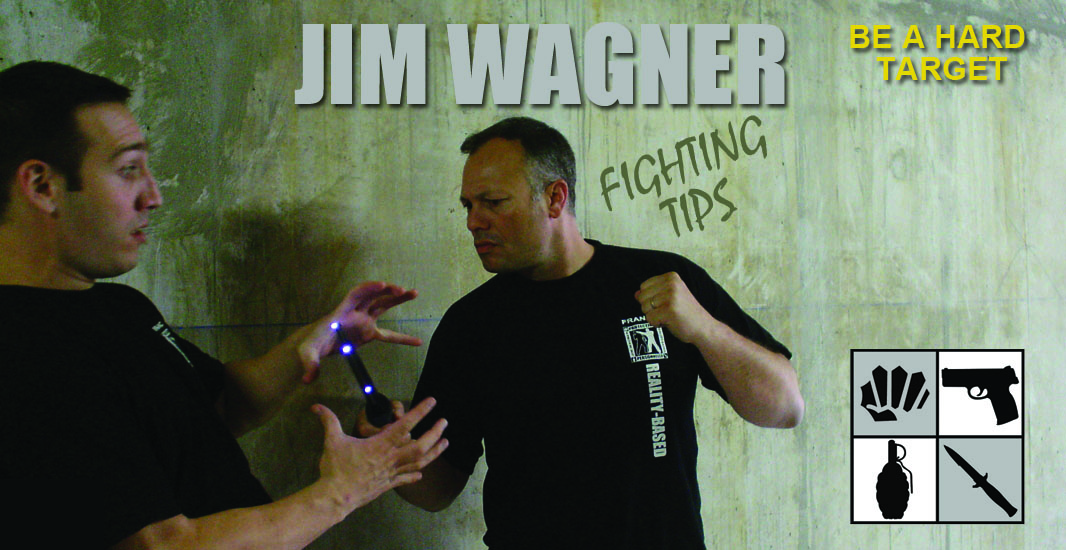How do most sparring matches begin in a typical dojo? It usually goes something like this. Two opponents square of on each other, give some form of salutation, and then start fighting on command of the instructor or referee. There’s nothing wrong with beginning like this, if you happen to be in the traditional or sports martial arts, but it has no place in reality-based martial-arts (martial arts which is 100% dedicated to realistic self-defense). Therefore, in seeking realistic training we must ask the question, “How do most fights begin?” The answer is – with fighting words.
Whether it is a drunk patron in a bar or restaurant mouthing off to you, or a drug-crazed gunman who wants to carjack your vehicle, most attacks are initiated with some form of verbal communication – whether for mere dominant posturing or for victim compliance. Although there are no recorded statistics on this subject matter, I would estimate (based upon my experience as a cop and Defensive Tactics instructor training departments globally) that 90-95% of all domestic and civilian street conflicts begin with verbalization. Those attacks that do not begin with words are in the ambush category (sneak attacks).
Using Words As Weapons
Just as we may use a kick or a punch to defend ourselves, the proper words spoken at the right moment during a crisis situation may also protect us. For example, you’re depositing a check at the ATM machine and an armed robber holds you up demanding that you withdrawal the maximum amount of money that the machine will allow you and hand it over to him. The wrong word to say to him would be, “No!” Such a simple word could get you shot. On the other hand, if you say “Okay, I’ll give you as much money as you want” it makes the robber relax knowing that you are compliant. Ultimately, that’s what any attacker wants from his victim – compliance. Whether you verbally comply to buy yourself sometime to set up your counter attack or you decide to gamble that handing over the money will prevent physical harm, then your words are your best form of defense initially. Such words spoken at the right moment are called deflection phrases, because they deflect the immediate danger of the initial attack. It may buy you a few minutes, or mere seconds depending on the crisis.
Expanding on our ATM illustration, let’s say that you were unable to withdrawal any cash from the machine (perhaps it’s a business account for deposits only, your broke, or whatever), what are you going to tell the robber? “Sorry, I don’t have the money to give you.” Is he going to believe you? Probably not. Therefore, in order to prevent him from “capping you” (shooting you) you may use a deflection phrase such as, Look, it won’t let me take any money out, but I’ll give you my wallet (or purse).” By offering the crook what he wants you are verbally deflecting harm. Even if you end up saying the wrong thing, don’t hesitate to immediately rephrase your words to deflect negative consequences.
By playing the game, and verbally backing down, you lead the attacker to believe he is in control.
Words Are Not Enough
When you use deflection phrases the attacker must be absolutely convinced that you mean what you say – even if you are bluffing to set up a counter attack or escape.
In human communication there are three components, which the receiver (the person you’re talking to) cues in on:
1. Content – the actual words used (10%)
2. Verbals – how the words are spoken: tone and pitch of the voice (40%)
3. Non-Verbals – body language: face expressions, hand gestures (50%)
Whatever you say to your attacker, he is going to be more focused in on your non-verbal indicators, and how you say it, then the actual words you use. Therefore, whatever you say to the attacker, all three components must be in harmony to make him believe you – especially if you’re about to execute a daring move. In some respects, you have to learn to be a good actor (I highly recommend martial artists to take a few acting classes in learning how to pull off successful ruses).
Another key factor worth mentioning is that of cross-cultural communications. If you ever find yourself dealing with an attacker from a different culture, it is definitely worth the effort to understand the cultural norms you may be exposed to; whether in your own neighborhood or upon your travels. For example, on many Hispanic cultures direct eye contact is avoided when speaking to a superior as a sign of respect. If you should ever find yourself in this situation and make direct eye contact with the wrong person, then this one little mistake could be interpreted as defiance, and it could cost you dearly.
Practical Application
The words that your attacker uses will usually determine his intent. Likewise, your words can help diffuse the situation, distract your attacker, or the wrong thing said could get you killed. In some high-risk situations, such as kidnapping or hostage taking, your words will be more important than any kick or punch you’ve perfected. Therefore, learning Conflict Communications is absolutely necessary.
To incorporate Conflict Communications into your reality-based training, you must seamlessly blend it into your scenario training (role playing); in police and military circles we call this Practical Application, or “Prac Ap” for short.
Rather than beginning a “match” in the traditional way, you and your partner(s) must establish the context of the conflict (robbery, bar fight, sexual assault, ect.). Then, you must have an initiating script (words the attacker(s) will use to initiate the assault). Finally, your scenario needs to follow predictable patterns (logical events that would result emulating real life. In other words, what would really happen if the victim chose to fight, flight, or submit).




